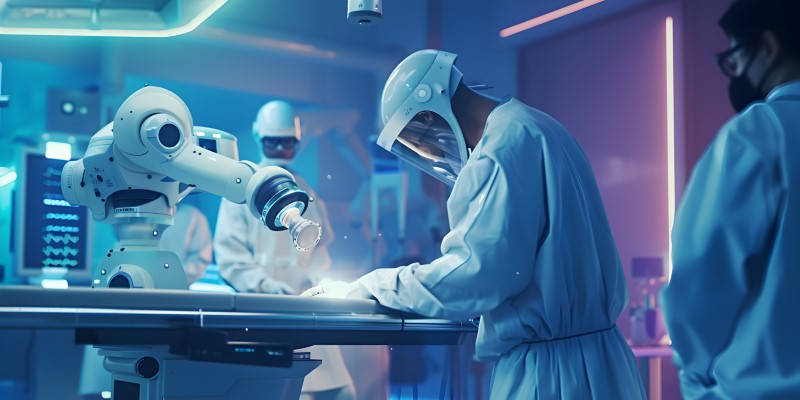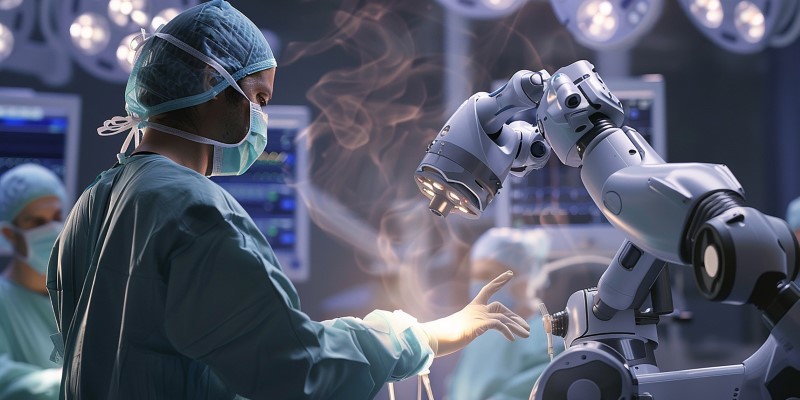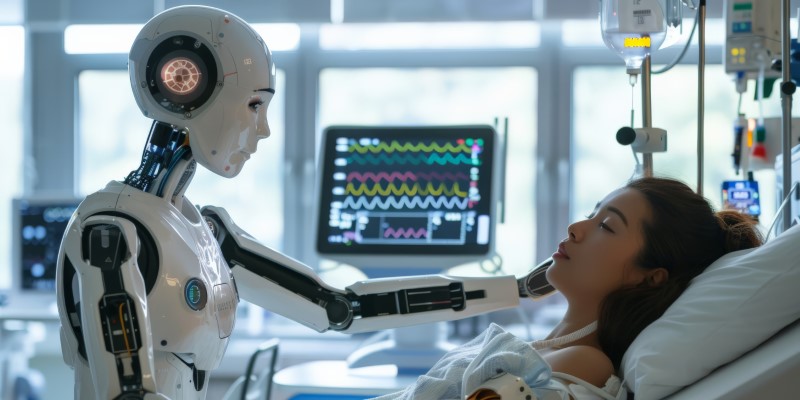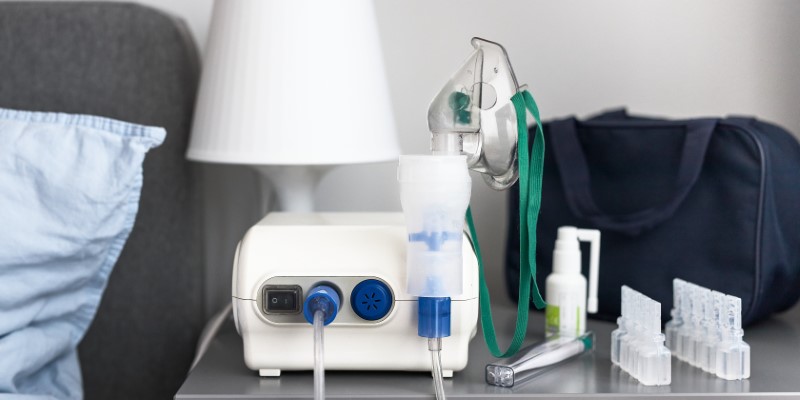Advertisement
Sep 09, 2024 By Tooba

Medical robotics is a significant development in healthcare, blending advanced technologies with patient care to improve outcomes. In 2024, the field is not only reshaping surgeries but also expanding into rehabilitation, giving patients better recovery experiences. As the integration of robotics grows, its influence on precision, efficiency, and safety in medicine becomes more evident.
Introduction To Medical Robotics In Healthcare
Medical robotics have significantly advanced, expanding from surgical assistance to rehabilitation, diagnostics, and patient care. These technologies enhance precision, reduce human error, and improve patient outcomes, particularly in delicate procedures like microsurgery.
Robotics also personalize rehabilitation therapies, promoting faster recovery. Their ability to perform tasks with high accuracy results in fewer complications and shorter recovery times, making them increasingly valuable in modern healthcare.

Innovations In Robotic-Assisted Surgeries
Robotic-assisted surgeries represent a significant advancement in medical technology. These surgeries involve using robotic systems that allow surgeons to perform intricate operations through small incisions, providing higher precision than traditional methods. A well-known example is the da Vinci Surgical System, which has been successfully implemented in various fields such as urological, gynecological, and cardiac surgeries.
Enhanced Surgeon Control With Robotic Systems
One of the primary benefits of robotic-assisted surgeries is the level of control surgeons gain through these systems. Robotic arms equipped with surgical instruments are operated by the surgeon via a console, offering enhanced precision. These systems can filter out the surgeon’s natural tremors, allowing for steadier movements, which is vital during delicate surgeries. Additionally, 3D visualization tools provide a detailed view of the surgical area, enabling surgeons to make more informed decisions.
Minimally Invasive Procedures And Patient Benefits
Robotic systems help make surgeries less invasive. These minimally invasive procedures involve smaller incisions, which means patients experience less scarring, spend less time in the hospital, and recover faster. In surgeries like prostatectomy and hysterectomy, the precision provided by robotic systems reduces complications, such as excessive bleeding or damage to nearby tissues, offering significant advantages to both patients and medical teams.
Expanding Use Of Robotic Surgery In General Procedures
While robotic-assisted surgeries were initially associated with specialized operations, in 2024, there is a growing trend toward their use in more routine procedures. General surgeons are adopting robotic-assisted techniques for surgeries like appendectomies, hernia repairs, and gallbladder removals. This shift indicates the increasing integration of robotics in everyday healthcare, making robotic surgery a standard rather than a novel option.

Role Of Robotics In Rehabilitation And Patient Care
Beyond surgery, robotics is making a profound impact on rehabilitation. Rehabilitation robotics involves the use of robotic devices to assist patients in regaining movement and strength following an injury or surgery. These devices offer patients personalized exercises and support as they recover, allowing for more precise and effective rehabilitation plans.
Exoskeletons: Enhancing Mobility
One key innovation in rehabilitation robotics is exoskeletons. These wearable robotic suits help patients who have lost mobility regain some of their physical abilities. Exoskeletons support the patient's movements, making it easier for them to walk or perform daily tasks. In cases of spinal cord injuries or stroke, these robotic devices provide critical assistance in regaining motor functions.

Cognitive Rehabilitation Through Robotics
Robotics also plays a role in cognitive rehabilitation. For example, robotic systems can offer repetitive, controlled tasks that help retrain the brain in stroke patients. These systems monitor patient performance, adjust the difficulty of tasks, and provide real-time feedback to both patients and healthcare providers, ensuring that therapy is personalized and responsive to each patient’s progress.
Advancements In Robotic Prosthetics
Another growing area of robotics in patient care is robotic prosthetics. These advanced prosthetics, equipped with sensors and AI, can mimic natural movements more accurately than traditional prosthetics, offering patients more control and freedom in their daily lives. This has been especially beneficial for individuals who have lost limbs due to accidents or medical conditions like diabetes.

Future Trends And Ethical Considerations In Medical Robotics
AI will transform the future of medical robotics, enabling greater automation and smarter decision-making. AI could allow robots to perform surgical tasks independently under a surgeon's guidance, while machine learning algorithms enhance the accuracy of robotic-assisted diagnoses, improving early disease detection and precision.
Nanorobotics: A Revolutionary Trend
Nanorobotics, which involves using microscopic robots to perform procedures at the cellular level, is another promising trend in the future of medical robotics. These tiny robots could target cancer cells directly, potentially reducing the need for invasive surgeries or treatments such as chemotherapy. Though still in the experimental phase, nanorobots hold immense potential for transforming how we approach the treatment of various medical conditions.
Ethical Considerations In Medical Robotics
As medical robotics becomes more advanced, there are important ethical considerations to address. One key concern is the potential reduction of the human element in patient care. While robots can assist with medical procedures, they cannot replace the empathy, intuition, and personal connection provided by healthcare professionals. As robotic systems advance, it's crucial to maintain a balance between technological efficiency and the personal touch in healthcare.
Data Privacy Concerns In Robotic Healthcare
Robotics in healthcare often involves the collection and processing of significant amounts of patient data, raising serious concerns about data privacy. With the increasing integration of robotic systems, ensuring that patient privacy is protected will be crucial. Safeguarding how this data is stored, shared, and used is vital as robotics become more embedded in healthcare systems.
Accessibility And The Cost Of Robotic Systems
The high cost of advanced robotic systems presents a potential barrier to accessibility in healthcare. If these technologies remain costly, they may only be available to certain populations, widening the gap in healthcare access. As technology evolves, there will be a need to make robotic systems more affordable and accessible to a broader range of healthcare facilities, ensuring that patients from all backgrounds benefit from these innovations.

Conclusion
Medical robotics is transforming both surgeries and rehabilitation in 2024, offering precise, less invasive procedures and more effective recovery options. As the field continues to grow, innovations like AI and nanorobotics will likely redefine the limits of what is possible in healthcare. However, these advancements must be pursued with ethical considerations in mind, ensuring that technology enhances rather than diminishes the human side of medicine. With proper regulation and continued research, medical robotics promises to lead healthcare into a new era of enhanced patient outcomes and personalized care.
-

What Are the Benefits of Peripheral Heart Action Training?
Aug 28, 2024
-

What Makes Medicinal Mushrooms the Hottest Health Trend?
Aug 28, 2024
-

What Tech Tools Can Help Improve Your Sleep Quality?
Sep 09, 2024
-

How Can You Enhance Sleep Hygiene with Tech and Tips?
Aug 28, 2024
-

What Are The Health Benefits Of Medicinal Mushrooms?
Sep 09, 2024
-

How Does Preventive Medicine Influence Healthy Aging?
Aug 27, 2024
-

Why Are Bodycare Innovations Stealing the Spotlight from Facial Skincare?
Aug 28, 2024
-

How Digital Health Tools Are Changing The Healthcare Landscape
Aug 27, 2024
-

The Importance Of Doctor Recommendations In Consumer Health Decisions
Aug 27, 2024
-

How Can Everyday Gear Perform Medical Tests At Home?
Sep 09, 2024
-

The Benefits Of Cold Plunging: Why It’s Trending In 2024
Sep 09, 2024
-

How Do Structural Barriers Impact Community Health?
Aug 27, 2024
-

Current Legislative And Regulatory Changes In Healthcare
Aug 27, 2024
-

Who Needs to Consider Functional Medicine?
Jan 01, 2000